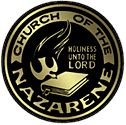Apostle Peter's, Saint Peter's Day - 29th June
The Apostle Peter, also known as Saint Peter, Shimon "Keipha" Ben-Yonah/Bar-Yonah, Simon Peter, Cephas and Keipha—original name Shimon or Simeon (Acts 15:14)—was one of the Twelve Apostles whom Jesus chose as his original disciples. His life is prominently featured in the New Testament Gospels and the Acts of the Apostles. Paul (who also is celebrated this day) and he are also the patron saints of fishermen and there are many coastal celebrations today to celebrate this.
According to the New Testament Peter was a Galilean fisherman assigned a leadership role by Jesus (Matthew 16:18; John 21:15–16). Many within the early Church, such as St Clement of Rome (1st Epistle to the Corinthians,1,59:1) and St Irenaeus[1], mention his primacy.
The ancient Christian Churches, Roman Catholic Church, Eastern Orthodox, Oriental Orthodox and Anglican Communion, consider Simon Peter a saint and associate him with the foundation of the Church in Rome, even if they differ on the significance of this and of the Pope in present-day Christianity.
Some who recognize his office as Bishop of Antioch and, later, as Bishop of Rome or Pope, hold that his episcopacy held a primacy only of honour, as a first among equals. Some propose that his primacy was not intended to pass to his successors. Still others view Peter as not having held the office of bishop or overseer, on the grounds that this office was a development of later Christianity. Some Protestants do not use the title of "saint" in reference to him.
The Roman Martyrology assigns 29 June as the feast day of both Peter and Paul, without thereby declaring that to be the day of their deaths. St Augustine of Hippo says in his Sermon 295: "One day is assigned for the celebration of the martyrdom of the two apostles. But those two were one. Although their martyrdom occurred on different days, they were one." The Annuario Pontificio gives the year of Peter's death as A.D. 64 or A.D. 67. Some scholars believe that he died on October 13 A.D. 64. It is traditionally believed that the Roman authorities sentenced him to death by crucifixion. According to a tradition recorded or perhaps initiated in the apocryphal Acts of Peter, he was crucified head down. Tradition also locates his burial place where the Basilica of Saint Peter was later built, directly beneath the Basilica's high altar. In art, he is often depicted holding the keys to the kingdom of heaven (the sign of his primacy over the Church), a reference to Matthew 16:19.

